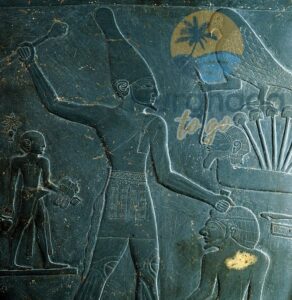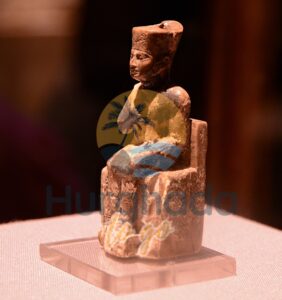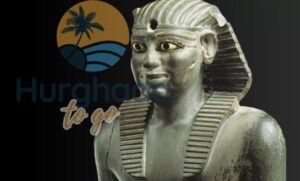The Pharaohs of Ancient Egypt: Unraveling the Epic Saga of the Nile’s God-Kings
Picture a world where the Nile’s gentle ripples sustain a thriving civilization, where colossal stone monuments pierce the sky, and where kings are not mere mortals but gods incarnate, wielding power over life, death, and the cosmos itself. Welcome to ancient Egypt, a land of mystery, majesty, and pharaohs whose reigns shaped one of humanity’s greatest stories. This deep dive into the lives of Egypt’s kings peels back the layers of their divine rule, monumental achievements, and the intricate web of politics, religion, and culture that defined their world. Buckle up for an immersive journey through the sands of time!
Pharaohs of Ancient Egypt
The rulers of ancient Egypt are commonly known today as pharaohs, although this specific term was not applied to Egyptian kings until the New Kingdom period (c. 1539–1077 BCE). Despite this, historians and scholars now use the word pharaoh to describe all kings of Egypt, largely because of its presence in the Hebrew Bible.
The following record traces Egyptian kings from the Predynastic period (before c. 2900 BCE) through to the Roman conquest (30 BCE). The system of dividing rulers into dynasties originates with the Egyptian priest Manetho, who in the 3rd century BCE composed a history of Egypt. His work survives only in fragments, preserved by later historians such as Josephus, Julius Africanus, Eusebius, and George Syncellus.
All dates in this list are expressed in BCE. From the mid-7th century onward, Egyptian chronology aligns firmly with the wider history of the ancient Near East, making these dates secure. Earlier regnal dates, however, remain a matter of scholarly debate. Female rulers are indicated with (f).
For an overview of Egypt’s dynasties, see the List of Dynasties of Ancient Egypt.

Dynasty 0 (before c. 2900 BCE)
Archaeological evidence indicates that before Egypt’s unification under the 1st Dynasty, several regional rulers governed separate territories. These early kings, often grouped as Dynasty 0, reigned during the Predynastic period. Their capitals were scattered across Egypt, and although exact reign dates remain unknown, their names are preserved in fragments of early hieroglyphic inscriptions from the late 4th millennium or early 30th century BCE.
Some names from this period include Ny-Hor, Hat-Hor, Iry-Hor, and Ny-Neit, while others are identified only by symbols, such as “Crocodile,” “Bird with vertical sign,” and “Scorpion.” The precise order of their rule is uncertain.
1st Dynasty (c. 2900–2730 BCE)
Narmer (c. 2900–?)
Aha (?–c. 2870)
Djer (c. 2870–c. 2823)
“Serpent” (c. 2822–c. 2815)
Den (c. 2814–c. 2772)
ʿAdjib / Anedjib (c. 2771–c. 2764)
Semerkhet (c. 2763–c. 2756)
Qaʿa (c. 2755–c. 2732)
2nd Dynasty (c. 2730–2590 BCE)
Hetepsekhemwy (c. 2730–?)
Reʿneb (?–c. 2700)
Nynetjer (c. 2700–c. 2660)
Peribsen (c. 2660–c. 2650)
Sekhemib (c. 2650–?)
Sened (?–c. 2610)
Khasekhemwy (c. 2610–c. 2593)
3rd Dynasty (c. 2592–2544 BCE)
Djoser (c. 2592–c. 2566)
Sekhemkhet (c. 2565–c. 2559)
Khaʿba (c. 2559–?)
Nebka (?)
Huni (?–c. 2544)
4th Dynasty (c. 2543–2436 BCE)
Snefru (c. 2543–c. 2510)
Khufu (c. 2509–c. 2483)
Redjedef (c. 2482–c. 2475)
Bikheris (c. 2474–c. 2473)
Khafre (c. 2472–c. 2448)
Menkaure (c. 2447–c. 2442)
Shepseskaf (c. 2441–c. 2436)
The Pharaoh’s Divine Mandate: Gods Among Men
In ancient Egypt, the pharaoh was no ordinary ruler. The term pharaoh, derived from per-aa (“great house”), originally referred to the royal palace but evolved into a title for the king himself—a living deity. Seen as the embodiment of Horus, the falcon-headed god of the sky, pharaohs held a divine mandate to maintain ma’at, the cosmic order that kept chaos at bay. Upon death, they merged with Osiris, lord of the afterlife, ensuring their eternal legacy. This divine status wasn’t just symbolic; it was the bedrock of their authority, blending spiritual and temporal power in a way that’s hard to fathom today.
A pharaoh’s role was a high-stakes balancing act:
Guardian of Ma’at: They ensured harmony through just governance, overseeing laws, trade, and agriculture to keep Egypt prosperous.
High Priest: As the chief intermediary with the gods, pharaohs performed rituals—sometimes daily—to secure divine favor, like ensuring the Nile’s floods for bountiful harvests.
Warrior-King: Leading armies into battle, they defended Egypt’s borders and expanded its reach, their victories immortalized in temple carvings of smiting foes.
Cultural Patron: Pharaohs commissioned awe-inspiring monuments, from pyramids to temples, that doubled as propaganda, cementing their legacy in stone.
This divine multitasking made pharaohs the linchpin of Egyptian society, their every action reverberating through the land and beyond.
A Dynasty of Legends: The Pharaohs Who Shaped Egypt
Ancient Egypt’s 3,000-year epic is divided into key periods—Old Kingdom, Middle Kingdom, New Kingdom, and the turbulent Intermediate Periods—spanning over 30 dynasties and hundreds of kings. Each era brought rulers who left indelible marks, from towering pyramids to daring reforms. Let’s dive into the lives of these iconic pharaohs, exploring their triumphs, struggles, and the secrets of their reigns.
The Old Kingdom (c. 2686–2181 BCE): The Pyramid Age’s Titans
The Old Kingdom was Egypt’s first golden age, a time of unparalleled ambition when pharaohs built monuments that still defy logic. Known as the “Age of the Pyramids,” this era showcased Egypt’s engineering genius and centralized power.
King Narmer (c. 3100 BCE): Often considered Egypt’s first pharaoh, Narmer unified Upper and Lower Egypt, symbolized by the Narmer Palette, a ceremonial slab depicting him as a conquering hero. His reign set the template for pharaonic rule, blending divine authority with political unity.

King Djoser (c. 2670 BCE, 3rd Dynasty): Djoser revolutionized architecture with the Step Pyramid at Saqqara, designed by Imhotep, a polymath later deified as a god of wisdom. This six-tiered structure, the world’s first major stone monument, was a bold leap from mudbrick tombs, signaling Egypt’s architectural prowess. Imagine thousands of workers toiling under the desert sun to create this eternal resting place.

King Khufu (c. 2589–2566 BCE, 4th Dynasty): The mastermind behind the Great Pyramid of Giza, Khufu’s ambition was colossal. This 481-foot marvel, built with 2.3 million limestone blocks, required logistical genius—quarrying, transporting, and aligning stones with astronomical precision. Herodotus, the Greek historian, claimed it took 20 years and 100,000 workers, a testament to Khufu’s organizational might. Yet, little is known of his personal life, making him a figure of mystery.

King Sneferu (c. 2613–2589 BCE): Khufu’s father, Sneferu, was the ultimate pyramid innovator, building three major pyramids, including the Bent Pyramid and the Red Pyramid. His experiments refined pyramid construction, paving the way for Giza’s perfection.

King Pepi II (c. 2278–2184 BCE, 6th Dynasty): Allegedly ruling for 94 years, Pepi II ascended the throne as a child and lived into his 90s. His marathon reign, filled with trade expeditions to Nubia and Punt, ended in decline as regional governors grew too powerful, triggering the Old Kingdom’s collapse.

The First Intermediate Period followed, a chaotic interlude of fragmented rule, but the pharaoh’s divine aura endured, setting the stage for a comeback.
The Middle Kingdom (c. 2055–1650 BCE): The Resilient Restorers
After a century of disunity, the Middle Kingdom was Egypt’s phoenix moment—a time of reunification, reform, and renewed ambition. These pharaohs rebuilt a fractured land with grit and vision.
King Mentuhotep II (c. 2061–2010 BCE, 11th Dynasty): The hero of reunification, Mentuhotep II waged war from Thebes to defeat northern rivals, restoring centralized rule. His mortuary temple at Deir el-Bahri, nestled against dramatic cliffs, was a masterpiece of art and architecture, blending power with piety. His reign marked a cultural renaissance, with literature and art flourishing.
King Senusret III (c. 1878–1839 BCE, 12th Dynasty): A towering figure, Senusret III was a warrior-king who expanded Egypt’s influence into Nubia, building a chain of fortresses along the Nile. His domestic reforms were ruthless, curbing the power of regional nomarchs (governors) to strengthen the crown. His stern-faced statues, with their realistic features, hint at a no-nonsense ruler whose legacy was stability and strength.
King Amenemhat III (c. 1860–1814 BCE): A master of infrastructure, Amenemhat III oversaw massive irrigation projects in the Faiyum region, turning swamps into fertile farmland. His pyramid at Hawara, with its labyrinthine chambers, fascinated ancient visitors like Herodotus.
The Middle Kingdom’s prosperity waned in the Second Intermediate Period, when the Hyksos, a Semitic people with advanced weaponry, ruled Lower Egypt. Yet, the stage was set for Egypt’s imperial zenith.
The New Kingdom (c. 1550–1070 BCE): The Empire of Immortals
The New Kingdom was Egypt’s blockbuster era—a time of conquest, wealth, and pharaohs who became legends. This was Egypt at its peak, an empire stretching from Nubia to the Levant.
King Ahmose I (c. 1550–1525 BCE, 18th Dynasty): The liberator who expelled the Hyksos, Ahmose I reunited Egypt and launched the New Kingdom. His military campaigns in Nubia and Canaan laid the foundation for Egypt’s empire, and his tomb set a new trend: hidden burials in the Valley of the Kings to thwart robbers.
Queen Hatshepsut (c. 1479–1458 BCE): Egypt’s most iconic female pharaoh, Hatshepsut seized power after her husband’s death, declaring herself king. Adopting male regalia, including a false beard, she ruled with unmatched flair. Her trading expedition to Punt brought back exotic treasures—gold, ivory, and myrrh trees—celebrated in stunning reliefs at her Deir el-Bahri temple. Hatshepsut’s reign was a masterclass in diplomacy and prosperity, proving a woman could rule as fiercely as any man.
King Thutmose III (c. 1458–1425 BCE): Stepping out of Hatshepsut’s shadow, Thutmose III became Egypt’s greatest conqueror. Leading 17 campaigns, he expanded Egypt’s empire to its zenith, from the Euphrates to Nubia. His Annals, carved at Karnak, detail battles like Megiddo, showcasing his strategic brilliance. Temples and obelisks sprouted across Egypt, funded by war spoils.
King Amenhotep III (c. 1388–1351 BCE): The “Sun King” of Egypt, Amenhotep III presided over a golden age of wealth and art. His diplomatic marriages and correspondence with foreign rulers (preserved in the Amarna Letters) cemented Egypt’s status as a superpower. His colossal statues, the Memnon Colossi, still guard the Theban necropolis.
King Akhenaten (c. 1353–1336 BCE): The heretic pharaoh, Akhenaten upended Egypt’s religion by worshipping only the Aten, the sun disk, and banning traditional gods. Moving the capital to Amarna, he and Queen Nefertiti fostered a revolutionary art style—intimate and expressive. His radical reforms alienated priests and nobles, and his legacy was erased after his death.
King Tutankhamun (c. 1332–1323 BCE): The boy-king, thrust onto the throne at nine, is famous not for his reign but for his tomb, discovered intact in 1922 by Howard Carter. Its treasures—golden masks, chariots, and jeweled coffins—offer a glimpse into Egypt’s opulence. Tut restored traditional religion, undoing Akhenaten’s changes, but died young, possibly from illness or injury.
King Ramesses II (c. 1279–1213 BCE, 19th Dynasty): Ramesses the Great, the ultimate showman, ruled for 66 years, fathering over 100 children and building monuments like Abu Simbel, whose massive statues still awe visitors. His Battle of Kadesh against the Hittites ended in the world’s first recorded peace treaty, a diplomatic coup. Ramesses’ self-glorification ensured his name echoed through history.
The New Kingdom’s decline into the Third Intermediate Period saw Egypt fractured by internal strife and invasions, but its pharaohs’ legacies were untouchable.
The Pharaoh’s World: Splendor, Symbolism, and Intrigue
Life at a pharaoh’s court was a spectacle of grandeur and intrigue. Palaces in Memphis, Thebes, or Amarna buzzed with nobles, scribes, and priests, all orbiting the god-king. The pharaoh’s regalia was steeped in symbolism:
The Pschent (Double Crown): Red for Lower Egypt, white for Upper, it declared dominion over a unified land.
Crook and Flail: These humble farming tools symbolized the pharaoh’s role as shepherd and provider, tying his power to Egypt’s agrarian roots.
Uraeus Cobra: Worn on the crown, this serpent promised divine protection, striking fear into enemies.
Pharaohs were master propagandists, commissioning temples and statues that told their stories in vivid hieroglyphs. The Valley of the Kings, with its hidden tombs, was a secret city of the dead, designed to protect royal mummies from looters. Yet, court life wasn’t all glory—palace conspiracies, like the harem plot against Ramesses III, revealed the dangers of power.
The Fragile Throne: Challenges and Collapse
Even gods faced mortal struggles. Succession disputes could spark civil war, as rival heirs or ambitious nobles vied for the throne. Economic crises, like grain shortages, or natural disasters, like failed Nile floods, tested pharaonic authority. Foreign threats—Libyans, Sea Peoples, or Assyrians—chipped away at Egypt’s borders. By the Third Intermediate Period (c. 1070–664 BCE), foreign dynasties, including Nubian and Libyan rulers, held sway. The Late Period saw Persian domination, and Alexander the Great’s conquest in 332 BCE ended native rule. The Ptolemaic dynasty, a Greek lineage ending with Cleopatra VII in 30 BCE, closed Egypt’s pharaonic chapter with drama and tragedy.
The Pharaohs’ Eternal Legacy
Why do Egypt’s pharaohs still captivate us? Their story is humanity’s story—ambition, faith, and resilience writ large. The Great Pyramid, standing for 4,500 years, defies time. Hatshepsut’s temple, carved into cliffs, radiates her audacity. Tutankhamun’s golden mask sparkles with the promise of eternity. Ramesses II’s statues at Abu Simbel dare us to forget him. These kings built not just monuments but a civilization that shaped art, architecture, and religion.
Archaeology keeps their stories alive. The Rosetta Stone unlocked hieroglyphs, letting us hear their voices. Tombs and temples reveal their dreams and fears. From Narmer’s unification to Cleopatra’s final stand, the pharaohs remind us of humanity’s capacity to create, conquer, and endure. As you stand before a pyramid or gaze at a pharaoh’s statue, you’re not just seeing history—you’re touching the divine spark of a civilization that refuses to fade.
Easy & Secure Booking
Book your unforgettable Hurghada adventures today with HurghadaToGo.
🌐 Official Website: hurghadatogo.com
📧 Email: [email protected]
📱 WhatsApp: +201009255585




